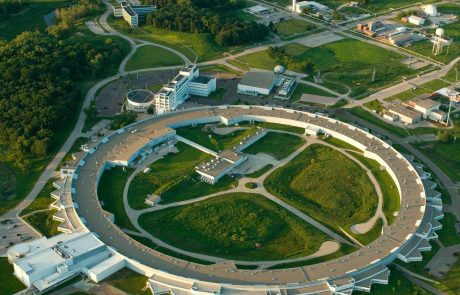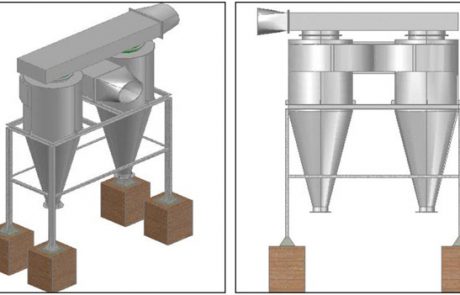
Kimiya Enviro Care Engineering designs, builds and installs saline water treatment plants for the wastewater produced in seawater desalination processes, as well as for the treatment of brines originated in industrial production processes.
Currently, there are numerous technologies available for the design of a saline water treatment plant and for the treatment of brines produced in industrial processes. The selection of the most suitable process depends on various factors such as the composition of the wastewater, the volume to be treated, the available energy sources, or the final destination of the treated effluent. These alternatives can be classified as follows:
Dilution processes: Before discharging into the ocean, the brine produced is diluted with effluents from other treatment plants with a very low salt concentration and an output flow higher than that of the brine to ensure adequate dilution. Effluents from sewage treatment plants or thermal power plants are normally used.
Management processes: These include different treatment processes for saline effluents produced in both desalination plants and other types of sectors. The brine treatment guarantees greater environmental sustainability and a reduction of its impact on the environment.
The most significant effluent management processes are described below.
Saline water management
Saline water management is undoubtedly a decisive factor for any type of industry or sector which produces a saline effluent. Although the discharge is not hazardous in itself, if uncontrolled it can have a high environmental impact and so must be properly managed.
A wide range of industries, such as desalination plants, gas and oil drilling rigs, energy generation plants, leather tanneries, preserved food, olive, salted food, oil, ham and cured meat manufacturing plants, and all industries that require high volumes of water (decalcification, demineralization, reverse osmosis, etc.) generate brines for one reason or another.
Its management is not always simple and the most appropriate option always depends on a large number of factors, such as flow, concentration, geographical location and availability of residual energy sources. Among possible options for brine management, there is no doubt that the most environmentally sustainable approach is its treatment.
Brine production
As the variety of industries that generate saline effluents is broad, the most representative are discussed below:
I. Desalination of sea water
Desalination involves obtaining fresh water for human consumption or industrial or agricultural use from seawater or brine. Over the past few decades this practice has become widespread in those regions with water deficits, where supply cannot, therefore, be guaranteed. The intensive production of desalinated water at a moderate price is currently possible, thus meaning that this solution is applied in many cases to solve water supply problems. According to UN Water, the inter-agency mechanism for all water-related aspects at the United Nations, in February 2014 there were more than 16,000 desalination plants worldwide, with a production capacity of 70 hm3/day.
Irrespective of the technology used to achieve desalination, a fresh water flow and a waste or rejection flow are generated in all cases. The latter contains a high concentration of salts, which depends on the raw water being desalinated and the yield of the separation, which itself depends on the technology used. This waste should not be returned to the environment without treatment because of the high impact it would have, as well as causing a progressive increase in desalination costs, as a direct consequence of the increase in saline levels in the waters of origin.
Therefore, considering management as the most appropriate alternative, the techniques with highly efficient separation will lead to a reject with a high salt concentration, and vice versa.
II. Textile industry
The textile industry is characterized by high water use, and this water must be of high quality. The water used, whether obtained from the distribution network or from other sources, is subjected to a purification, normally a softening, process. Ion-exchange resins, the regeneration of which generates an effluent with a high salt concentration, have traditionally been used to eliminate water hardness.
Moreover, high salt concentrations are required in the medium used for textile fiber dyeing process to ensure that the pigment is fixed to the fabric. These dyeing waters have a high salt content even after treatment.
III. Landfill
Municipal solid waste (MSW) landfill sites generate leachate effluents, which must be treated so that they can be discharged with no environmental impact. Generally, after various processes, the treated effluent is subjected to a reverse osmosis process in order to obtain a pure water flow that can be reused or discharged and a smaller flow containing the concentrated contaminants. This effluent has a high salt concentration as it contains all the salts originally present in the leachates.
IV. Foodstuff preparation
Salting and brine-preservation techniques have traditionally been used to ensure that foods can be stored for long periods of time without being attacked by microorganisms. The brines are usually prepared from cold water, sodium chloride, sodium nitrite and flavoring substances.
In order for the brine to have a preserving effect, the salt concentration in the product must be between 15% and 20%. As a result, the salting and food preservation industries in general produce effluents with a high salt concentration.
The preparation of pickles (olives, gherkins, carrots, onions, etc. marinated in brine and vinegar) is an activity that generates effluents with an organic burden as well as high salinity. These effluents must be treated prior to discharge and it is advisable to recover the maximum amount of water possible for reuse in the process.
V. Effluents from water-treatment plants
A wide variety of industries need a source of high quality (ultra-pure) water for use in their production processes, especially the pharmaceutical, food and textile industries, etc. Such industries typically use ion-exchange resins to soften water or membrane-based processes (nanofiltration or reverse osmosis) for more complete treatments. The effluents generated by these processes concentrate all the salts and impurities removed from the crude water. A high water consumption in the process generates high waste effluent flows characterized by a high concentration of dissolved salts.
VI. Leather tanning industry
The leather tanning industry is characterized by its high contamination potential due to both the reagents used and the effluents generated in the different processes.
Generally, the processes used in the tanning of animal skins are salting (with NaCl), softening (using sodium sulfide, sodium polysulfide or sodium carbonate), unhairing (using sodium sulfide, sodium hydrosulfide, amines, calcium hydroxide and caustic soda), liming (in a bath of caustic soda), deliming (using hydrochloric acid, sulfuric acid, boric acid, ammonium chloride, ammonium acetate and cyclic esters), pickling (chromium salts and formaldehyde), tanning, lubrication, drying, conditioning and finishing (using dyes and aniline). The chemicals used in the different processes are incorporated into the wastewater as they are used.
The technologies used in these processes are increasingly clean, water-saving and reuse effluents, thereby reducing final contamination of the water. Finally, treatment of the waters removes most of the contamination. However, the dissolved salts present in the effluents are not removed, thus meaning that they remain unaltered upon exiting the treatment plant and these waters have salt concentrations of up to 10,000 mg/L. As a result, these waters, with this salt content, cannot be discharged into either the sewage network or public watercourses.
VII. Treatment of water for energy-generation plants
Energy-generation plants need water of the highest quality to operate. This water is transformed into high temperature steam, which moves the alternator. The ultra-pure water used is generally obtained by subjecting water from the distribution network, or from other sources, to a treatment process. This process generates a waste effluent that concentrates all the impurities removed from the water. Such effluents are characterized by their high salt concentration and must therefore be treated prior to discharge.
VIII. Gas and oil wells
The gas and oil industry is also capable of producing significant brine effluents. A large number of gas and oil wells are found close to seams of rock salt. The technique used to extract oil comprises drilling wells into which fresh water, which dissolves the salt and returns to the surface as a brine, is injected. Oil is recovered by displacing it towards the surface by injecting water or brine. The excess brine must be treated or discharged into the sea in the case of an underwater field.







